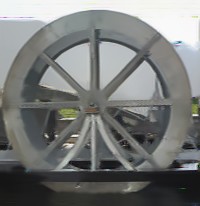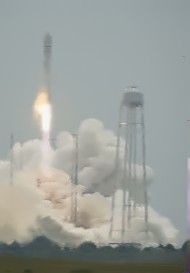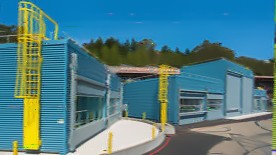
www.rhci-online.net/radiogram/radiogram.htm
██╗ ██╗██████╗ ██████╗ ██████╗ █████╗ ██████╗ ██╗ ██████╗ ██████╗ ██████╗ █████╗ ███╗ ███╗ ██║ ██╔╝██╔══██╗██╔════╝ ██╔══██╗██╔══██╗██╔══██╗██║██╔═══██╗██╔════╝ ██╔══██╗██╔══██╗████╗ ████║ █████╔╝ ██████╔╝██║ ██████╔╝███████║██║ ██║██║██║ ██║██║ ███╗██████╔╝███████║██╔████╔██║ ██╔═██╗ ██╔══██╗██║ ██╔══██╗██╔══██║██║ ██║██║██║ ██║██║ ██║██╔══██╗██╔══██║██║╚██╔╝██║ ██║ ██╗██████╔╝╚██████╗ ██║ ██║██║ ██║██████╔╝██║╚██████╔╝╚██████╔╝██║ ██║██║ ██║██║ ╚═╝ ██║ ╚═╝ ╚═╝╚═════╝ ╚═════╝ ╚═╝ ╚═╝╚═╝ ╚═╝╚═════╝ ╚═╝ ╚═════╝ ╚═════╝ ╚═╝ ╚═╝╚═╝ ╚═╝╚═╝ ╚═╝
|
RSID: <<2014-07-19T11:32Z
MFSK-64 @ 6095000+1500>>
<STX>
Eric van Willegen is just back from the Americana International
festival in Loughborough, UK, where this vintage Corvette was one of
the American cars on display...
<EOT>
<STX>
Sending Pic:184x76C;

<EOT>
<STX>
http://www.americana-international.co.uk/previous/2014/initial/index.htm
<EOT>
██╗ ██╗ ██████╗ █████╗ ██████╗ █████╗ ██████╗ ██╗ ██████╗ ██████╗ ██████╗ █████╗ ███╗ ███╗ ██║ ██║██╔═══██╗██╔══██╗ ██╔══██╗██╔══██╗██╔══██╗██║██╔═══██╗██╔════╝ ██╔══██╗██╔══██╗████╗ ████║ ██║ ██║██║ ██║███████║ ██████╔╝███████║██║ ██║██║██║ ██║██║ ███╗██████╔╝███████║██╔████╔██║ ╚██╗ ██╔╝██║ ██║██╔══██║ ██╔══██╗██╔══██║██║ ██║██║██║ ██║██║ ██║██╔══██╗██╔══██║██║╚██╔╝██║ ╚████╔╝ ╚██████╔╝██║ ██║ ██║ ██║██║ ██║██████╔╝██║╚██████╔╝╚██████╔╝██║ ██║██║ ██║██║ ╚═╝ ██║ ╚═══╝ ╚═════╝ ╚═╝ ╚═╝ ╚═╝ ╚═╝╚═╝ ╚═╝╚═════╝ ╚═╝ ╚═════╝ ╚═════╝ ╚═╝ ╚═╝╚═╝ ╚═╝╚═╝ ╚═╝
RSID: <<2014-07-19T16:01Z
MFSK-32 @ 17860000+1500>>
<STX>
Welcome to program 68 of VOA Radiogram from the Voice of America.
I'm Kim Andrew Elliott in Washington.
Here is the lineup for today's program (MFSK32):
1:36 Program preview (now)
2:43 Encuentro Nacional Diexista in Mexico, with
image
7:19 Water wheel cleans Baltimore waterways, with
image
14:04 Launch of cargo craft to the ISS, with image
19:27 Lab tests energy-saving technologies, with image
26:26 Closing announcements
Please send reception reports to radiogram@voanews.com .
And visit voaradiogram.net .
Twitter: @VOARadiogram
<EOT>
<STX>
If you are in Mexico or can get to Mexico, this invitation to
attend a meeting of shortwave DXers....
XX ENCUENTRO NACIONAL DIEXISTA
El Grupo Diexista México, invita a todos los radioescuchas,
diexistas y apasionados de la onda corta, la radioafición y el
diexismo a la edición número 20 del Encuentro Nacional Diexista.
Lugar: Coxcatlán, San Luis Potosí.
Fecha: Viernes 1, Sábado 2 y Domingo 3 Agosto 2014
Exposiciones, talleres de antenas, charlas, intercambio y venta
de equipos, práctica de recepción de señales de onda corta, modos
digitales, activación de estaciones móviles de radioaficionado y
11 metros.
Estarán participando:
Radio Educación Onda Corta (XEPPM 6185 Khz)
Asociación de Radioaficionados de la República Mexicana
(ARARM, A.C.)
Federación Mexicana de Radioexperimentadores (FMRE, A.C.)
Información:
https://www.facebook.com/events/528484227270025/
Contacto:
encuentrodx@hotmail.com
Cel. +52 1 4891158729
<EOT>
<STX>
Sending Pic:232x237C;

<EOT>
<STX>
VOA NEWS
Water Wheel Picks Up Trash in Baltimore's Waterways
Deborah Block
July 14, 2014
BALTIMORE - Trash in waterways around the world is a major
environmental issue. The U.S. city of Baltimore, Maryland, is
tackling its problem with a one-of-a-kind contraption with a
water wheel that pulls in garbage. Since it began operating last
May, the water wheel has proved more effective than other means
of picking up trash in the water.
The odd-looking contraption sits on the Jones Falls River that
flows into Baltimore's harbor. Every year, storm run-off from
city streets carries huge amounts of garbage and debris into the
river, polluting the harbor.
"After a rainstorm, we could get a lot of trash in Baltimore
Harbor," said Adam Lindquist, who is with the Waterfront
Partnership of Baltimore, the group that sponsors the water
wheel. "Sometimes the trash was so bad it looked like you could
walk across the harbor on nothing but trash."
Containment booms funnel trash and debris towards the gadget,
where a leaf rake pulls it in and onto a moving conveyer that
drops the garbage into a dumpster. The dumpster is on a floating
dock that can be pulled to shore by boat, where the waste is
burned to create electrical energy.
The water wheel is more efficient than the way the garbage was
being picked up -- using small boats with nets.
Daniel Chase, co-designer of the device, says it can remove
45,000 metric tons of garbage each day.
"Instead of chasing one or two pieces of trash at a time, we just
stand at the source of it and catch it all at once," he said.
Chase says the garbage comes from people who throw litter like
plastic bottles or Styrofoam plates on the ground, instead of
putting it into bins.
The water wheel uses renewable energy -- mostly river current,
but when needed, also energy from solar panels.
'It is run on water, so it's either river current, pushing from
underneath or we are pumping water onto it which then fills
buckets to carry the wheel around," Chase said.
The rotation of the water wheel also provides other benefits by
putting oxygen back into the river, and thus improving the water
quality.
Chase says the technology can be used on waterways anywhere in
the world. But he thinks that's not the answer in the long run.
"The real cure is not the water wheel. The real cure is not
littering," he said. "And the best I can tell, that's by
educating children."
Lindquist agrees.
"Our goal is actually to put the water wheel out of business,"
he said. "Of course, that will come through behavior change, if
people don't let garbage leave their hands except to go into a
receptacle, then we wouldn't need a water wheel."
Lindquist says the water wheel is also helping with another goal
-- to make the harbor safe for swimming by 2020.
http://www.voanews.com/content/water-wheel-picks-up-trash-in-baltimores-waterways/1957539.html
<EOT>
<STX>
Image: The Baltimore water wheel...
<STX>
Sending Pic:200x206C;

<EOT>
<STX>
This is VOA Radiogram from the Voice of America.
Please send reception reports to radiogram@voanews.com .
Unmanned Cargo Craft Launched to Space Station
VOA News
July 13, 2014
A private U.S. company has launched an unmanned cargo carrier to
resupply the astronauts living aboard the International Space
Station (ISS).
Orbital Sciences Corporation launched its Cygnus cargo spacecraft
on an Antares rocket July 13 from Wallops Island, Virginia.
The spacecraft is packed with 1,600 kilograms of food, equipment,
science experiments and tools.
The launch is the second of eight missions the company has
contracted with the U.S. space agency, NASA.
The Cygnus docked with the station Wednesday.
Private companies, Orbital Sciences and SpaceX, have contracted
with NASA for multiple missions to carry supplies to the ISS.
NASA lost its ability to reach the space station after the
30-year space shuttle program ended in 2011.
Europe and Russia also have spaceships to carry equipment and
provisions to the research outpost.
Astronauts are launched three at a time to the space station
aboard Russia's Soyuz spacecraft, at a cost of $70.7 million
each.
Several U.S. companies are competing to build the crew vehicle
that will restore U.S. access to the station in the next few
years.
http://www.voanews.com/content/unmanned-cargo-craft-launded-to-space-station/1956679.html
<EOT>
<STX>
Image: The Orbital Sciences Corporation Antares rocket launches
with the Cygnus spacecraft on board from NASA's Wallops Flight
Facility on Wallops Island, Virginia, July 13, 2014.
<EOT>
<STX>
Sending Pic:190x273C;

<EOT>
RSID: <<2014-07-19T16:19Z
MFSK-32 @ 17860000+1500>>
<STX>
This is VOA Radiogram from the Voice of America.
Please send reception reports to radiogram@voanews.com .
VOA NEWS
New Lab to Test Energy-Saving Technologies
George Putic, KI4FNF
July 11, 2014
Most of the electrical energy in the U.S. is consumed by
buildings and the building sector has the fastest growing rate,
but up to now the country did not have a facility for
comprehensive testing of new technologies that aim to make
buildings more energy efficient. That has changed with Thursday's
opening of a cutting edge laboratory, in California, for
evaluating the efficiency of new building methods and materials.
In many buildings, windows and walls are poorly insulated, air
conditioning and heating systems are inefficient and lighting is
inadequate. According to the U.S. Green Building Council,
buildings account for 36 percent of the nation's total energy use
and create 30 percent of its greenhouse gasses.
Technologies for lowering those numbers exist, but their
effectiveness is hard to measure because the process requires
real-life conditions.
In addition to testing each element individually, it's important
to assess how well they work together, says the executive manager
of the Department of Energy's new Flexlab, Cindy Regnier.
"We're looking at integrated systems, so instead of looking at
just components, like air conditioning units, we're looking at
the integration, of lighting systems with windows and shading, as
an example," said Regnier.
Flexlab has four test beds where scientists can compare the
efficiency and cost-effectiveness of different methods. One of
the test beds can be rotated 270 degrees to study technologies
under different solar orientations.
Cameras aimed at windows and walls are helping scientists
evaluate the energy efficiency of new materials.
Regnier says the work done at Flexlab can save billions of
dollars.
"Good integrated design in buildings can achieve as much as 50%
energy savings over regular energy use. That's true of the
existing buildings as well as new construction," she said.
Flexlab will work with all groups interested in improving energy
efficiency - from architects and builders, designers and
manufacturers of new materials, to building owners and research
sponsors.
Another important factor will be occupant comfort and acceptance,
so certain tests will involve people spending time in the
facility.
"One of the tests that we currently have going on with Webcor and
Genentech will have occupants come into the space and work in the
space for a couple of weeks so that they can test the
technologies and understand how they perform. It's really
important for the kind of work that we do," said Regnier.
Regnier says the tests conducted at Flexlab will provide a
preview of a building's energy use, before it's built - saving
time, money... and energy.
http://www.voanews.com/content/new-lab-to-test-energy-saving-technologies/1955945.html
<EOT>
<STX>
Image: Flexlab in Berkeley, California...
<EOT>
<STX>
Sending Pic:276x155C;

<EOT>
<STX>
Please send reception reports to radiogram@voanews.com.
And visit voaradiogram.net.
Twitter: @VOARadiogram
Thanks to colleagues at the Edward R. Murrow shortwave
transmitting station in North Carolina.
I'm Kim Elliott. Please join us for the next VOA Radiogram
This is VOA, the Voice of America.
<EOT>
RSID: <<2014-07-19T16:27Z
MFSK-64
@ 17860000+1500>>
<STX>
Sending Pic:316x28C;
![]()
<EOT>
RSID: <<2014-07-19T16:28Z
MFSK-16
@ 17860000+1500>>
<STX>
Thank you for decoding the modes on VOA Radiogram.
<EOT>
www.rhci-online.net/radiogram/radiogram.htm
|
QTH: |
D-06193 Petersberg (Germany/Germania) |
|
Ant.: |
Dipol for 40m-Band |
|
RX: |
ICOM IC-R75 + IF-mixer |
|
Software IF: |
con STUDIO1 - Software italiano per SDR [SAM-USB] |
|
Software AF: |
|
|
OS: |
German XP-SP3 with support for asian languages |
|
PC: |
MEDION Titanium 8008 (since 2003) [ P4 - 2,6 GHz] |
DRM-image - received via EASYPAL/DSSTV on 14233kHz/USB (FRG-100 / Dipol for ~12 MHz)
Here is a picture of F6FPU with (I think) a symbolic message:
